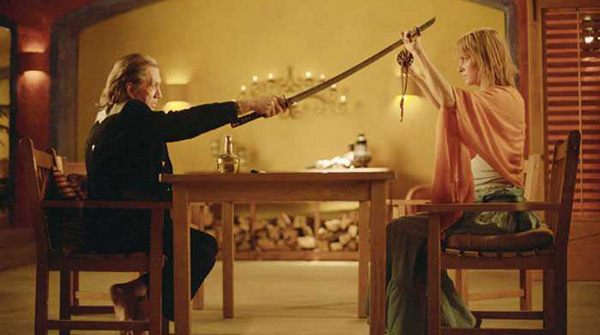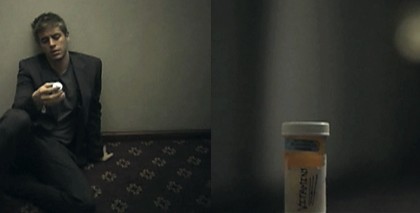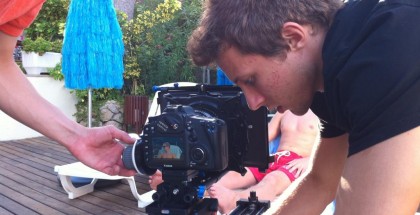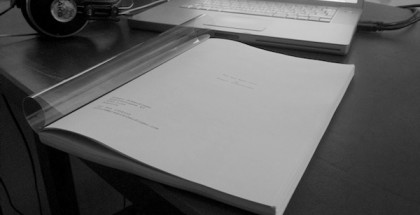-
Thanks Nino, thanks Gregor.
Really interesting story and I’m glad you posted it here on your blog otherwise I wouldn’t have noticed that.– Sebastian
-
Thanks Sebastain. I like the idea of marrying form and function on a platform like this. 🙂
-
-
Gregor, thank you for bearing your soul. Your insights are well considered and thought provoking.
Nino, thank you for providing the canvas, as ever.
I long for part three.
-
Thanks. Anytime. 🙂 I am glad you like it. 🙂
-
-
Inspiring 🙂
-
Gregor-
I really appreciate your sharing this your thoughts and experience about writing and movie making.I do have one question about the statement in your thesis “If the intention is to make money thus lacking originality, then it‘s commerce.”
Are you stating that there is no originality in commercial communication or that the sole intention of making money impedes originality?
-Thanks, keep up the good work-
Hey Scott. Thanks a lot. I think you are asking a very
relevant question here. The answer I can give you is that my
statement of course is a generalization. It’s neither black nor
white. I needed to make this generalization though to express a
tendency since I had neither the space nor the time to truely get
into the topic. I hope that is a valid answer to you.
Gregor
-
-
Nice post, Gregor! I’m not sure I’d agree with your
definition of Buddhism: “Buddhism has been teaching that the world
is neither bad nor good. It simply is. Only through the subjective
experience, we apply value to it. I am sure that you once had a bad
hair day that let the world look gray and hostile and a couple of
days later it was the exact opposite. That‘s subjective experience”
In fact, Buddha has taught us that the world is a world of
suffering (dukkha). Sounds pretty bad to me! Also, by applying
value to anything, we create attachment, which is the root cause of
suffering: if your attachment is not sustained, you suffer (think
ex-girlfriend, not being able to afford the whole range of CP.2
primes etc 😉 The only way to not suffer is to not attach your mind
to anything and not apply value to anything either and just live in
the moment. That’s the doctrine of emptiness (i.e. Nothing has
value, not even nothingness, which is known as the emptiness of
emptiness). This is not as bleak and life-rejecting as it sounds,
it’s just to stop your mind from creating pigeonholes for
everything and experiencing the world in categories (clichés and
stereotypes) rather than the way they really are. Yes, you are
seeing the world through your eyes but I think you may have
misunderstood the core teaching of Buddhism. It took me a long time
to grasp it too but a year at uni studying emptiness certainly
helped 🙂 Your post has given me renewed confidence in myself
though in helping me use my background to tell stories though.
Let’s see if I can make a film based on the emptiness of emptiness
😀 Peace, Guido-
Hey Guido, who would have a guessed that we have such a
deep philosopical discussion on a gear oriented blog. I like it and
I do agree with you although I myself am not a huge fan of the
suffering teaching. Buddha probably never expressed it the way I
did but I think it’s the conclusion you can draw from Buddhsim
teachings. Radical constructivism says pretty much the same but in
a rather western tinted language. I hope you wont’t make emptiness
your foundation of your stories. In fact, we want the opposite,
suffering aka conflict. That’s life, that’s development and
emptiness can be the result. But more on that next week. 🙂
Gregor-
Thanks for your reply Gregor. Sorry to get all philosophical, it’s just something I used to read about a lot, so I couldn’t just let it slide.
The suffering teaching is not something you can be a fan of really…it’s just something we have to live with!
Of course anything can be interpreted in another way and you’re free to do so.
As for emptiness, it’s actually considered a positive thing in Buddhism. Check out the article on http://www.thebigview.com/buddhism/ for an overview if you’re interested.
If you were to make a film about emptiness (the doctrine, that is, not what we normally perceive it as!) it would definitely include pain, suffering and conflict, just as a painter uses black and dark hues to create shadows and contrast.
Looking forward to next week’s post. This one prompted me to write one of my own 🙂
Cheers
Guido
-
-
It’s certainly true that the Buddhist perspective is of a life which inherently causes and contains suffering. However, it seems to me that what Gregor meant was closer to the Buddhist teaching on good and evil rather than on the nature of existence in the cycle of death and rebirth. On this subject, the Buddhist viewpoint is in fact that good and evil do not exist, and are in fact subjective creations of our own minds; through this false assertion, we attach ourselves to life and are unable to treat others equally in spite of their behaviour and actions, under the assumption that some people are simply evil people and cannot be forgiven. Buddhism teaches, in fact, that our negative thoughts and activities are a consequence of our misguided attachment to other people and to other things; thus, wrongdoers are simply those who are heading in the wrong direction spiritually, and are to be pitied in this right by the more wise rather than go unforgiven. In the bigger picture of rebirth, a Buddhist knows that their negative karma will catch up to them in the next life, and wishes them all the best in learning through this increased suffering to change the path they are on.
-



























Comments